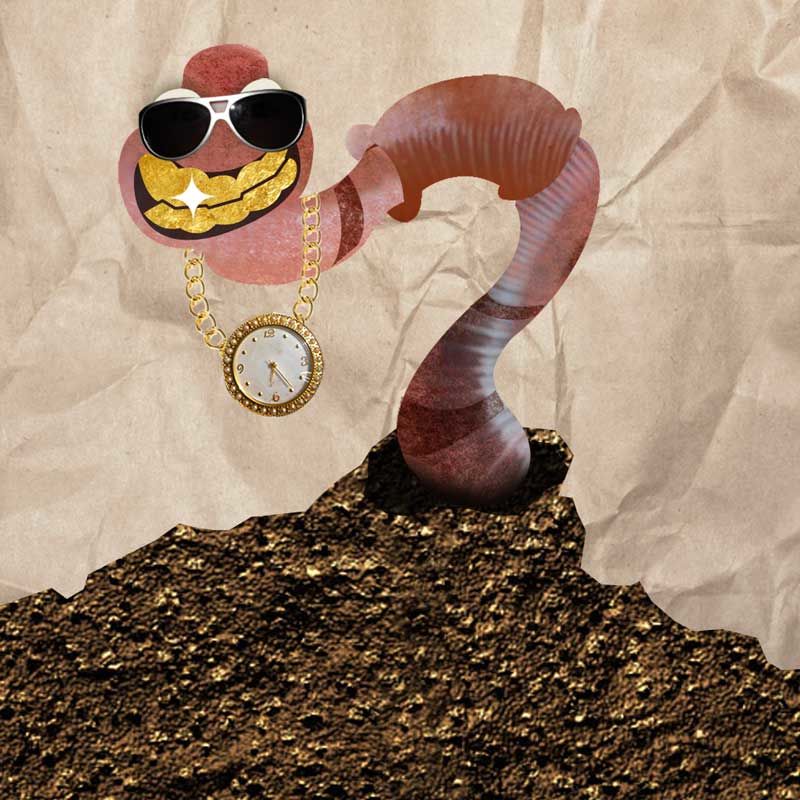One typically associates composting with composting services or bins (as WRT uses in its office), but rarely do you think of how worms can break it down. Vermiculture is the cultivation of worms (vermis latin for worm) to convert organic waste into fertilizer. Worms of the most commonly used species Eisenia Fetida—commonly known as red wigglers—are the heavyweights of the vermiculture arena. It is widely believed that these worms can process up to their weight in kitchen waste per day converting it into "black gold," a nutrient rich soil amendment that is highly sought after by gardeners.
It's easy to start your own worm bin. First, pick a container with ample surface area and ventilation, and place it in a location that is protected from direct sun, wind, and uncontrolled moisture. Then, select a bedding type—typically shredded newspaper, dried leaves, or manure. Fill the container 3/4 full with moistened bedding of your choice, and then add your red wigglers to the top. Once they get acclimated (1–2 days), start adding kitchen waste, such as fruit and vegetable scraps; grains; breads, coffee grinds, and tea bags. Be sure to avoid any meats; dairy; oily foods; plastics; metals; and pet waste. Start slowly, adding only 1/4 lb. a day, and work up to 1/2 lb.
To keep the bin fly- and odor-free, always bury the waste you add and maintain the right balance between moisture content (upwards of 80-90%) and air flow. After a couple of months you can start harvesting the "black gold." Now, can you dig that?!

